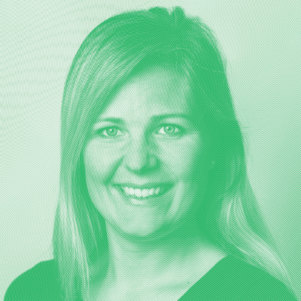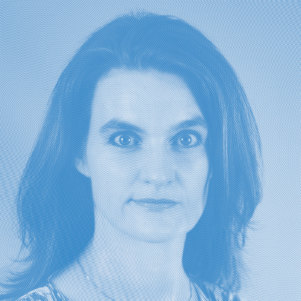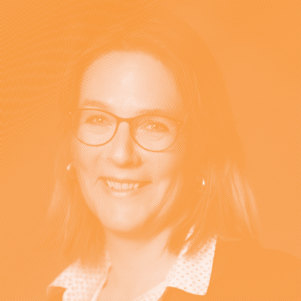I’ve been the director of Amnesty International Switzerland since 2011, and I’ve been an employee of Amnesty International since 2004, first as the spokesperson for French-speaking Switzerland and then as head of media and lobbying for Switzerland as a whole.
I’m passionate about changing people’s lives. I’m incredibly lucky to work for an organization that defends human rights. Being able to make the world a better place, even on a small scale, gives me purpose every day at work and in my life in general. What motivates me the most is bringing energy and hope, through my interviews, lectures and exchanges with my colleagues, and showing that if we come together we can change the world.
My career path. I didn’t plan out my career. The opportunities to climb the ladder within Amnesty International Switzerland popped up almost by chance. But what has been really important is that people have always trusted in me : first of all my parents, who told me that nothing was impossible ; then my teachers, who pushed me but also supported me in my extracurricular activities ; and my colleagues and bosses in each position I’ve held who believed in my abilities and gave me responsibility even though I was still young and inexperienced. I’m lucky to have the support of an amazing and very motivated team and, above all, many volunteers who have been working with us, often for years.
A downside or obstacle ? There are a lot of disappointments when you work to protect fundamental rights. Things move backwards, discriminatory laws get brought in by presidents, campaigners get killed in their countries – there are unfortunately plenty of things to get you down. But I won’t let myself give up, because elsewhere in the world human rights activists need our support now more than ever.
I never came across any obstacles as a result of being a woman. In fact, I even benefitted from positive discrimination when Amnesty International Switzerland was looking to give more positions of responsibility to women. I applied for a position as manager that was reserved for a woman. I got it and began managing a small team even though I had no experience in that area.
I’m proud each time Amnesty International secures the release of a political prisoner, prevents the forced eviction of an indigenous community or gets the law changed to allow same-sex marriage. I feel proud to be part of a movement that makes progress like that possible. In Switzerland, I’m proud to have raised awareness of human rights in schools and among the general public. The positive feedback I get from young people who work with Amnesty is proof that I made the right choice.
The Proust Questionnaire
This section is available only in the original language
Au-delà de votre profession
Lecture, cuisine et voyages.
Des personnes qui vous inspirent
Ruth Dreifuss, parce qu’elle n’a jamais cessé
de s’engager, et Nelson Mandela qui représente
le modèle absolu.
Un livre & un film
Un long chemin vers la liberté (Nelson Mandela) et Cry Freedom (Richard Attenborough) ou
Une saison blanche et sèche (Euzhan Palcy).
Un modèle
Je citais toujours un homme, Nelson Mandela, et
les femmes modèles manquaient, parce que
leur combat est moins médiatisé. J’ai donc écrit
Mes héroïnes, des femmes qui s’engagent,
pour rendre hommage à ces femmes
engagées invisibles.
Un objet
L’objet qui représente Amnesty International :
la bougie dont la flamme vacille parfois mais
ne s’éteint jamais, et qui apporte de l’espoir
même dans les ténèbres.
Une couleur
Le jaune, bien sûr !
Un rêve
Que tous les êtres humains sur cette planète puissent voir leurs droits respectés.



